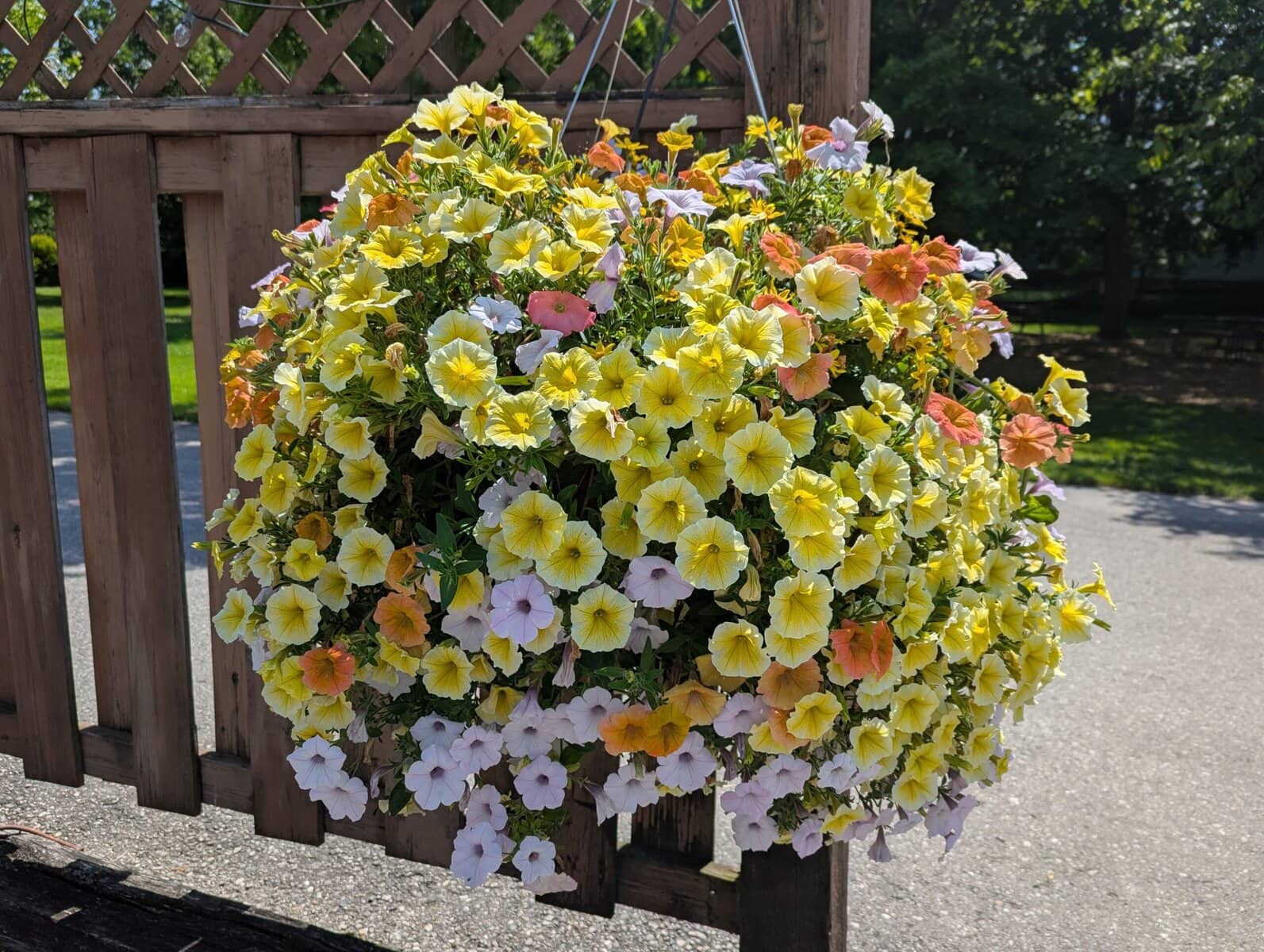By mid-to-late summer, many annuals start to look worn out after blooming steadily for weeks. Whether planted in garden beds or containers, they can lose energy and appear tired or leggy — especially during hot, dry weather.
Reviving them now can give your garden a second wind. Here’s how:
Deadhead aggressively
Deadheading — removing spent flowers — keeps annuals blooming all season. Once a plant produces seed, it thinks its work is done and stops flowering. Cutting off blooms shortly after they fade encourages the plant to grow new ones.
Remove the flower stalk along with the bloom, not just the petals, to prevent unsightly brown stems.
Cut back leggy growth
Plants such as petunias, calibrachoa, cosmos and lobelia can become stretched and thin, often from a lack of sunlight. Cut back up to one-third — or more — of the plant to encourage fuller regrowth.
After cutting back, feed with a balanced fertilizer such as 10-10-10.
Water deeply and consistently
With temperatures in the 30s this summer, deep watering is key. Avoid light sprinkling — water until it drains from the bottom of containers.
Water needs vary depending on plant type, sun exposure and whether they’re in the ground or pots. Let the soil surface dry slightly between waterings, and aim to water early in the morning to reduce stress during the day.
Feed regularly
Heavy bloomers are heavy feeders. Fertilize annuals about every two weeks.
Granular organic fertilizers, such as bone meal, dissolve slowly and provide long-lasting nutrition. Fish emulsion is an organic liquid option that works more quickly. Chemical fertilizers are often available in liquid form and are absorbed rapidly.
Choose a balanced formula, such as 10-10-10, or one higher in phosphorus (the middle number) to promote blooms and roots.
Check for stress, pests and disease
Spider mites, aphids and powdery mildew are common in mid-summer. Monitor plants closely for leaf discolouration, sticky residue or curling. Early detection makes problems easier to fix. In some cases, removing a few affected leaves is enough to control the issue.
Watch container plants
Container annuals can become root-bound, causing soil to shrink away from the pot and water to run through quickly. If that happens, add potting soil between the pot and the root ball so it can retain moisture.
Following these simple steps can keep your annuals blooming until frost.
Joanne Young is a Niagara-on-the-Lake garden expert and coach. Find more at joanneyoung.ca.
The Niagara-on-the-Lake Horticultural Society will host a series of public Saturday morning gardening classes with Young at the NOTL Community Centre from Sept. 6 to 27. All classes start at 10 a.m.
Sept. 6: Fall and Winter Plant Show-Offs
Sept. 13: Starting From the Ground Up
Sept. 20: The World of Bulbs
Sept. 27: Putting Your Garden to Bed
For details and to pre-register, visit notlhortsociety.com/classes.











